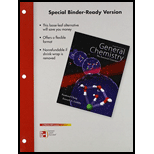
Interpretation:
The given terms have to be defined.
Explanation of Solution
System: System can be defined as portion of universe. The physical and chemical changes of substance generally constitute a system.
There are types of system in
- 1. Open system
- 2. Closed system
- 3. Isolated system
Surroundings: Surrounding can be defined as rest of universe other than the system.
Consider, the example of acid-base neutralization reaction,
The reactants
Open system: The free exchange of matter and energy with its surroundings is called as open system. The exchange of matter in open system takes place either by addition of matter or removal of matter. The exchange of energy is much more complicated than exchange of heat. The exchange of energy takes place through heat and through work.
Closed system: The exchange of energy with its surroundings and not matter is called as closed system. The transfer of energy is similar to that of open system
Isolated system: Either exchange of energy or matter takes place with the surroundings is called isolated system.
Thermal energy: It can be defined as internal energy that is seen in the system because of its temperature. Thermal energy deals the unsystematic motion of atoms and molecules. Its type of kinetic energy that is due to motion. Thermal energy results in substance possessing an internal temperature, which can be measured.
Chemical energy: Chemical energy can be defined as the energy that is seen in the
Examples of matter containing chemical energy are,
- 1) Coal- Chemical energy is converted into light and heat.
- 2) Wood- Chemical energy is converted into light and heat. etc
Potential energy: The energy possessed by an object due to its relative point to some other object, stress surrounded by itself, its electric charge or any other external factor is called as potential energy.
Potential energy can be calculated using the formula,
Where m= mass, g=gravity due to acceleration and h=height.
Kinetic energy: The work that is required to accelerate a body of a given weight from rest to its velocity is called kinetic energy. The kinetic energy of object is calculated by the formula,
Where m= mass and v=velocity.
Law of conservation of energy: The first law of thermodynamics states that energy can be either destroyed or created but instead it can be converted from one form to other. The first law of thermodynamics is modified version of law of conversion of energy for a thermodynamic system. The total energy of system that is isolated is constant.
The equation for the first law of thermodynamics is given by,
Where U=total energy of the system
Want to see more full solutions like this?
Chapter 6 Solutions
Loose Leaf For General Chemistry With Connect Access Card
 ChemistryChemistryISBN:9781305957404Author:Steven S. Zumdahl, Susan A. Zumdahl, Donald J. DeCostePublisher:Cengage Learning
ChemistryChemistryISBN:9781305957404Author:Steven S. Zumdahl, Susan A. Zumdahl, Donald J. DeCostePublisher:Cengage Learning ChemistryChemistryISBN:9781259911156Author:Raymond Chang Dr., Jason Overby ProfessorPublisher:McGraw-Hill Education
ChemistryChemistryISBN:9781259911156Author:Raymond Chang Dr., Jason Overby ProfessorPublisher:McGraw-Hill Education Principles of Instrumental AnalysisChemistryISBN:9781305577213Author:Douglas A. Skoog, F. James Holler, Stanley R. CrouchPublisher:Cengage Learning
Principles of Instrumental AnalysisChemistryISBN:9781305577213Author:Douglas A. Skoog, F. James Holler, Stanley R. CrouchPublisher:Cengage Learning Organic ChemistryChemistryISBN:9780078021558Author:Janice Gorzynski Smith Dr.Publisher:McGraw-Hill Education
Organic ChemistryChemistryISBN:9780078021558Author:Janice Gorzynski Smith Dr.Publisher:McGraw-Hill Education Chemistry: Principles and ReactionsChemistryISBN:9781305079373Author:William L. Masterton, Cecile N. HurleyPublisher:Cengage Learning
Chemistry: Principles and ReactionsChemistryISBN:9781305079373Author:William L. Masterton, Cecile N. HurleyPublisher:Cengage Learning Elementary Principles of Chemical Processes, Bind...ChemistryISBN:9781118431221Author:Richard M. Felder, Ronald W. Rousseau, Lisa G. BullardPublisher:WILEY
Elementary Principles of Chemical Processes, Bind...ChemistryISBN:9781118431221Author:Richard M. Felder, Ronald W. Rousseau, Lisa G. BullardPublisher:WILEY





